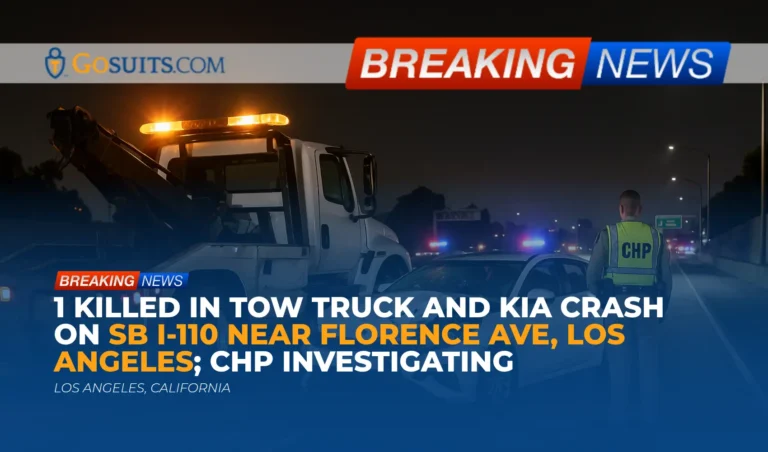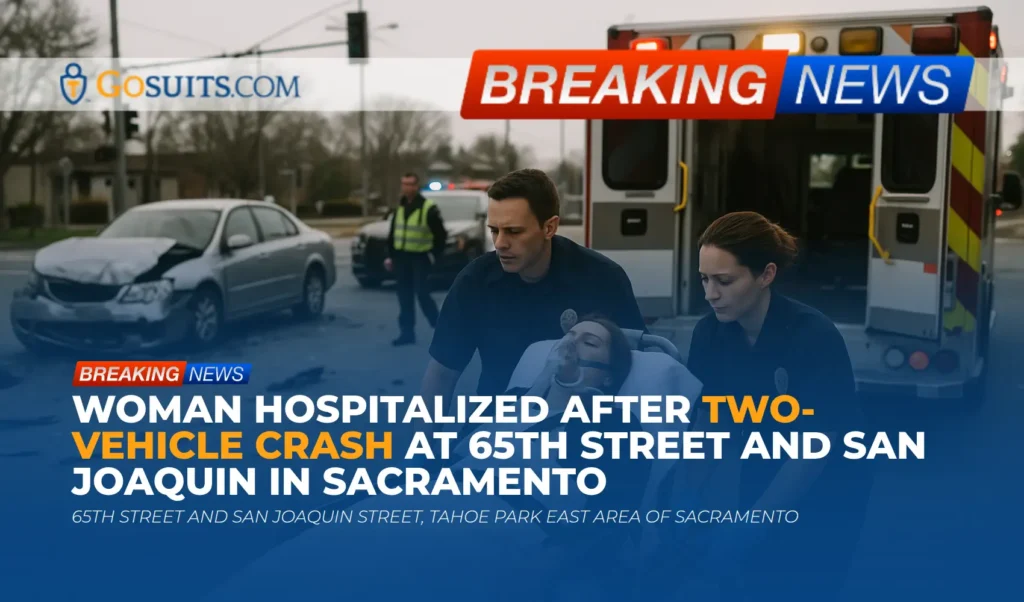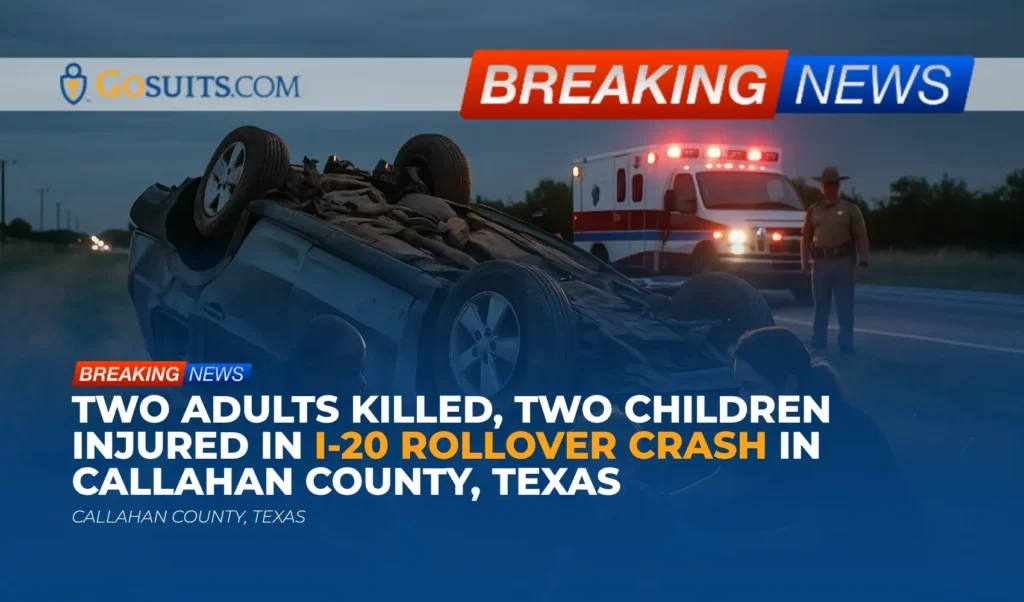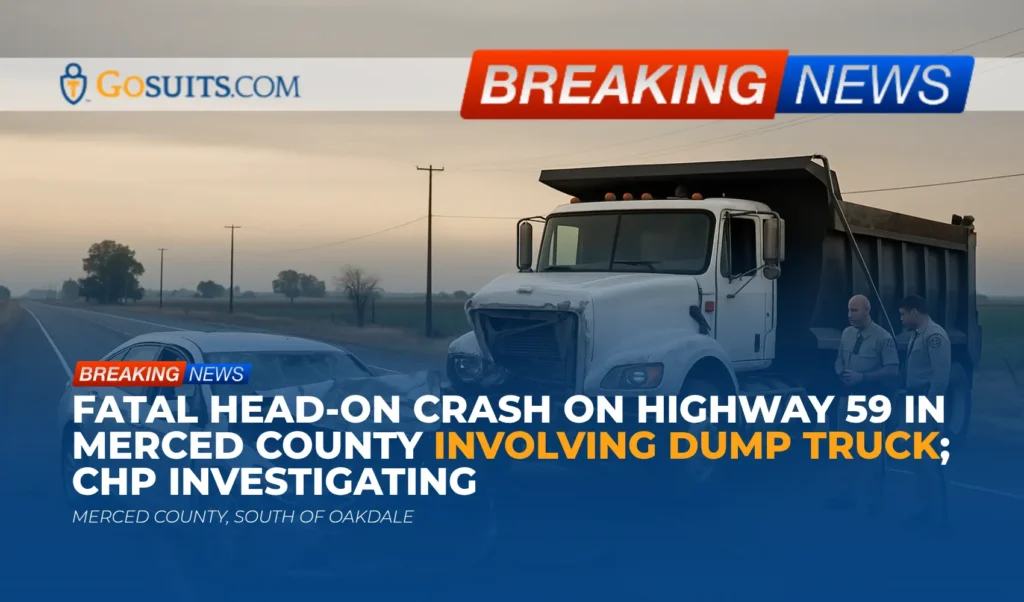- What is known about the SB I-110 crash near Florence Avenue
- Traffic impacts and safety measures reported by agencies
- How fatal freeway collisions are investigated in California
- Potential civil liability considerations after a tow-truck collision
- Insurance layers that may apply in tow-truck versus passenger vehicle crashes
- First steps families can take this week
- Where to request official records and reports
- Evidence that can matter in a tow-truck collision case
- Overview of civil claims after a fatal crash in California
- Safety context and data on large truck collisions
- Commentary from Gosuits Los Angeles, California Personal Injury Attorney
- Why timely action matters: practical next steps
What is known about the SB I-110 crash near Florence Avenue
A deadly collision occurred in the early morning hours of October 7, 2025, on southbound Interstate 110 in Los Angeles, between Florence Avenue and Manchester Avenue. According to information attributed to the California Highway Patrol, a white Kia and a tow truck were involved. The crash was reported at approximately 1:39 a.m. One person was tragically killed. At the scene, officials had not yet released further details about the person who died or the condition of others potentially involved. The cause of the crash remains under active investigation.
In the immediate aftermath, the California Highway Patrol (CHP) and Caltrans implemented a hard closure and issued a SigAlert to manage traffic and preserve the scene for investigators and cleanup crews. There was also a partial closure of the Florence Avenue on-ramp to southbound I-110. These measures are standard when first responders need room to work safely, protect evidence, and prevent secondary collisions while lanes are blocked.
No official findings on fault or contributing factors were available at the time of this reporting. In serious and fatal freeway collisions, investigators typically look at driver actions, vehicle condition, roadway environment, lighting, and other contributing elements. Because the incident is under investigation, any assignments of blame should be avoided until authorities complete their work.
Traffic impacts and safety measures reported by agencies
CHP and Caltrans use closures and advisories to protect the public and responders after severe collisions. A “hard closure” generally means no traffic is allowed through the affected lanes while the scene is stabilized and documented. In Los Angeles, travelers can monitor current and future lane closures and incidents on Caltrans QuickMap, which displays live closures, incidents, and roadwork posted by state agencies. See Caltrans QuickMap for real-time updates.
SigAlerts are urgent traffic advisories issued for unplanned events that will tie up two or more lanes of traffic for at least 30 minutes. While motorists often experience delays, these actions help reduce the risk of secondary crashes and preserve crucial evidence. CHP’s public resources and incident reporting pages provide general information about how such scenes are managed and how collision reports are obtained; see California Highway Patrol and How to obtain a traffic collision report (CHP).
How fatal freeway collisions are investigated in California
Fatal freeway crashes are investigated by specially trained officers who document the scene, interview witnesses, and analyze any physical evidence. Depending on the complexity and severity, CHP may deploy its Multidisciplinary Accident Investigation Teams (MAIT), which are trained to evaluate factors such as speed, line of sight, vehicle dynamics, roadway design, and human factors. MAIT investigations can include advanced measurements, crash reconstruction models, and analysis of vehicle data, among other tools. For an overview of MAIT’s role, visit CHP MAIT.
Investigators typically consider:
- Driver behavior such as speed choice, signaling, lane changes, impairment indicators, distraction, fatigue, and compliance with traffic laws.
- Vehicle factors including brakes, tires, lighting, steering, load securement (for tow trucks), and the presence of any active safety systems.
- Roadway and environmental conditions like lighting, signage, lane markings, debris, weather, and construction zones.
- Event data from on-board systems. Passenger vehicles frequently contain electronic data recorders, and commercial vehicles may have telematics or logs relevant to speed, braking, or operation.
If the collision involved a tow truck operating in commerce, there may be additional records such as maintenance logs, driver qualifications, and, where applicable, hours-of-service information. Federal rules governing hours of service for certain commercial drivers are summarized by the Federal Motor Carrier Safety Administration at FMCSA Hours of Service.
Potential civil liability considerations after a tow-truck collision
Because the cause is still under investigation, fault is not known. Generally, civil liability after a fatal crash may be shared among involved parties based on evidence. California allows juries to apportion fault among multiple contributors to a collision. In practice, the analysis often includes:
- Driver negligence by any motorist whose unsafe actions contributed to the crash, such as improper lane changes, unsafe speed, following too closely, failure to yield, or driving while impaired or fatigued.
- Tow truck operational duties including safe merging, proper signaling, securing loads, use of lighting, compliance with equipment standards, and adherence to rules governing on-highway towing operations.
- Vicarious liability for a tow company if a driver was acting within the course and scope of employment at the time of the collision. California jury instructions discuss when an employer is responsible for an employee’s acts within the scope of employment; see the Judicial Council’s civil jury instructions resource at California Courts: Civil Jury Instructions.
- Comparative fault principles that allow a finder of fact to consider each party’s contribution to the incident. The California Courts provide model instructions addressing comparative fault in civil cases; see the Judicial Council’s CACI resource at California Courts: Civil Jury Instructions.
- Public entity issues if a roadway defect or traffic control device problem is alleged. Claims involving public entities follow special notice rules under the Government Claims Act; see Gov. Code § 911.2 on claim presentation deadlines.
If a loved one has died, California recognizes two distinct civil claims that may be available to eligible parties: a wrongful death claim, which belongs to certain family members, and a survival action, which belongs to the decedent’s estate for particular losses sustained before death. See Code Civ. Proc. § 377.60 (wrongful death) and Code Civ. Proc. § 377.30 (survival action). The general limitations period for these civil actions is set out at Code Civ. Proc. § 335.1. Separate, shorter deadlines can apply when a public entity is involved.
Insurance layers that may apply in tow-truck versus passenger vehicle crashes
Tow-truck collisions often involve commercial insurance carried by the towing company, which can differ from personal auto policies in coverage limits and endorsements. Depending on the facts, coverage considerations may include:
- Commercial auto liability for bodily injury and property damage caused by the tow-truck driver, if that driver is found negligent and acting within the scope of employment.
- Personal auto liability for the passenger vehicle driver, if evidence shows negligent driving contributed to the crash.
- Uninsured/Underinsured Motorist (UM/UIM) benefits on a decedent’s or household policy, which can apply if the at-fault driver has no insurance or insufficient limits. The California Department of Insurance provides a consumer guide on UM/UIM coverage at insurance.ca.gov and a specific overview at Understanding UM/UIM.
- Medical payments coverage on applicable auto policies, which may help with immediate medical or funeral expenses depending on policy terms.
- Employer coverage issues such as vicarious liability and potential direct negligence claims (for example, negligent hiring, training, or supervision) when evidence supports them.
Insurance companies typically launch investigations quickly, gather statements, and review available footage or data. Communications with insurers can impact future claims. If an insurance claim is contemplated, contacting an attorney for a no-cost consultation before speaking with insurance adjusters can help protect rights and avoid unintended statements that may be used later.
First steps families can take this week
Every situation is unique, and nothing can ease the immediate pain after a sudden loss. The steps below are intended to help families organize information and preserve options while official investigations proceed.
1) Obtain the CHP collision report when available
CHP collision reports contain critical details, including diagrams, involved parties, witness statements, and preliminary assessments. CHP explains how to request a report here: How to obtain a traffic collision report (CHP). Reports are typically available to involved parties, their representatives, and next of kin in fatality cases. Be prepared with the date, approximate time, highway (I-110), and nearest exits (Florence Avenue and Manchester Avenue).
2) Request records from the Los Angeles County Department of Medical Examiner
In fatal incidents, the county medical examiner manages the decedent’s examination and, when applicable, autopsy and toxicology. Families can request copies of reports, which often take weeks to finalize. Start with the department’s site: Los Angeles County Department of Medical Examiner. Records typically available include the autopsy report, toxicology results, and investigator’s narrative, depending on eligibility and status of the case.
3) Order certified death certificates
Death certificates are often required for estate and insurance matters. In Los Angeles County, certified copies can be requested through the Registrar-Recorder/County Clerk. See LA County Registrar-Recorder/County Clerk – Death Records for eligibility, ordering options, and fees.

4) Consider preserving vehicle data and belongings
Modern vehicles frequently store crash-related information via an electronic data recorder (EDR), often called a “black box.” This data can include speed, braking, throttle, and seatbelt status for a brief period around the crash. NHTSA provides information on EDRs at NHTSA: Electronic Data Recorders. Preservation steps may involve sending written notice to the relevant insurers and vehicle custodians to avoid alteration or disposal. An attorney can facilitate preservation letters and coordinate with storage facilities.
5) Be mindful of insurance communications
Insurance adjusters may request recorded or written statements early. What is said can be used later in claim evaluations. Before giving statements or signing medical or records authorizations, it is prudent to consult with an attorney to understand rights and potential consequences. A brief initial consultation can clarify who should speak to whom, and when.
6) Track deadlines
Civil claims in California have strict time limits. The general statute of limitations for wrongful death and survival actions is two years from the date of the incident under Code Civ. Proc. § 335.1. Claims involving public entities require a governmental claim within a short window, generally six months from the incident under Gov. Code § 911.2. If a crash resulted in injury or death, certain motorists must also report the incident to the DMV within 10 days using Form SR‑1; see DMV SR‑1 reporting requirements.
Where to request official records and reports
Families often ask whom to contact for official documents after a freeway fatality. The following government sources are typically involved in Los Angeles–area freeway crashes:
- California Highway Patrol (CHP) – Collision Report: Request directly from CHP using the process outlined here: CHP report request. Have the date, time, location (SB I‑110 near Florence Avenue), and, if known, the CHP report number.
- Caltrans – Lane closures and traffic management records: For historical lane closures and incident data, consult Caltrans QuickMap for reference and contact Caltrans District 7 for public records as needed.
- Los Angeles County Department of Medical Examiner: Obtain autopsy and related records, subject to eligibility and case status, at mec.lacounty.gov.
- Los Angeles County Registrar-Recorder/County Clerk: Request certified death certificates via lavote.gov – death records.
- Public records requests: For certain dispatch logs, non-privileged communications, or incident-related records, the California Public Records Act may apply; see Gov. Code § 6250 et seq. Note that collision reports and some investigative materials have disclosure limitations; agencies can explain what is available.
When contacting agencies, keep a written log of the date, time, person spoken to, and next steps they recommend. This record helps keep multiple tasks organized during a difficult time.
Evidence that can matter in a tow-truck collision case
Evidence drives outcomes in civil claims. In a crash involving a tow truck and a passenger vehicle, the following can prove important:
- Scene documentation: Photos or videos of final rest positions, skid marks, debris fields, roadway lighting, signage, and any roadway defects.
- Vehicle inspections and downloads: Mechanical conditions like brakes and tires, functional lighting, tow equipment, and EDR data from the passenger vehicle. If available, commercial telematics or engine control module data from the tow truck can be key.
- Witness statements and 911 audio: Eyewitness accounts and dispatch timing can help reconstruct the sequence of events. Requests may be subject to agency policies and privacy rules.
- Company records: For a tow truck, maintenance logs, driver qualification files, training materials, and duty records may exist. If the operation falls under federal or state motor carrier rules, hours-of-service and inspection records may apply; see FMCSA Hours of Service overview.
- Compliance with roadway safety laws: California’s Move Over law requires drivers approaching a stationary emergency, tow, or service vehicle with flashing lights to move over or slow down when safe. See Vehicle Code § 21809. While the reported collision involved a moving tow truck, investigators still evaluate signaling, lane changes, and safe operation for all vehicles.
Prompt preservation is crucial. Vehicles are often stored at tow yards with limited space, and evidence can be altered by weather or handling. Written preservation requests can help ensure that key items are retained for inspection.
Overview of civil claims after a fatal crash in California
Each claim pathway depends on the facts, insurance, and parties involved. Broadly:
- Wrongful death claim by eligible heirs to recover certain losses they suffered due to the death, authorized under Code Civ. Proc. § 377.60.
- Survival action by the decedent’s estate for specific losses between injury and death, under Code Civ. Proc. § 377.30.
- Property damage claims for the vehicle and personal items.
- UM/UIM claims if the at-fault driver is uninsured or underinsured, per California Department of Insurance guidance at Understanding UM/UIM.
If an insurance claim is contemplated, it is generally wise to speak with an attorney before calling the insurance company. Statements made to insurers can be recorded and may be used in later evaluations. An attorney can advise on notice requirements, what documents to gather, and how to avoid misunderstandings during the early stages.
Safety context and data on large truck collisions
Tow trucks are larger and heavier than typical passenger vehicles, which can increase crash forces in certain impact configurations. National data provide context for the risks associated with large truck collisions:
- National trends: The Federal Motor Carrier Safety Administration publishes annual statistical reports on large truck and bus crashes. The 2021 report shows continued fatalities in crashes involving large trucks nationwide and breaks down contributing factors and roadway types. See FMCSA Large Truck and Bus Crash Facts 2021.
- Event data recorders: Increasing availability of EDRs in passenger vehicles helps investigators understand pre-crash dynamics; see NHTSA EDR information.
- Move Over protections: California’s Move Over law, codified at Vehicle Code § 21809, is designed to reduce secondary collisions and protect roadside personnel, including tow operators, by requiring drivers to move over or slow down when approaching stationary vehicles with flashing lights.
While national and state frameworks aim to enhance safety, each crash is unique. Thorough, fact-specific investigations remain essential for understanding what happened and for assigning civil responsibility when appropriate.

Commentary from Gosuits Los Angeles, California Personal Injury Attorney
Our hearts are with those affected by the fatal collision reported on southbound I‑110 near Florence Avenue. This article is intended for educational purposes and general information for the community.
Crashes involving a passenger vehicle and a tow truck raise immediate questions about driver decisions, visibility, lane usage, and safe operations. In freeway settings at night or early morning, small gaps in judgment can have outsized consequences. It is appropriate that investigators are taking time to identify precisely what happened before anyone assigns blame. Preserving vehicle data and securing the CHP report are essential steps to clarify the timeline and the mechanics of the crash.
In our experience, insurance carriers and corporations move quickly after a serious crash. They collect statements, obtain vehicles, and analyze data right away. Families, however, are often still in shock and may not realize that a recorded statement or a broad medical authorization can affect later evaluations. This information imbalance can disadvantage those who are grieving. Early guidance from a seasoned attorney can help rebalance the process, ensure evidence is preserved, and keep communications focused and accurate.
A free consultation can provide clarity about insurance benefits, timelines, and what to expect from investigations without adding cost or pressure. It is a simple way to learn about available options and how best to coordinate requests for official records like the CHP report and medical examiner files.
Why timely action matters: practical next steps
The period immediately following a fatal collision is overwhelming. Still, several time-sensitive actions can protect information and options:
- Secure official records: Note the CHP report number as soon as it is available and request the report through CHP channels. Track the medical examiner case number and request records when released. These documents anchor future decisions.
- Preserve evidence early: Ask storage yards and insurers to hold the vehicles for inspection and data downloads. Written preservation holds help prevent inadvertent disposal or repair that could disturb evidence.
- Organize insurance information: Gather all auto policies for the household, including declarations pages. Identify potential UM/UIM coverage and any medical payments provisions that may help with immediate expenses.
- Be cautious with recorded statements: Before speaking with any insurer, seek a free legal consultation to understand what questions are appropriate and what can be deferred. Statements can be used in later evaluations.
- Calendar deadlines: Note the two-year limitation period found at Code Civ. Proc. § 335.1 and the six-month public entity claim deadline at Gov. Code § 911.2 if a government agency may be implicated. Missing a deadline can restrict options.
- Document impacts: Keep a journal of key dates, contacts, and expenses. Save funeral bills and correspondence. Organized records reduce stress and help avoid repeated requests from agencies and insurers.
Acting on these items now helps ensure that evidence is not lost, deadlines are met, and decisions are informed by reliable records rather than speculation. Even a short conversation with an attorney can clarify the order of operations and help avoid missteps that are hard to unwind later.
Resources mentioned in this article:
- California Highway Patrol – How to obtain a traffic collision report
- Caltrans QuickMap – Real-time closures and incidents
- Los Angeles County Department of Medical Examiner
- LA County Registrar-Recorder/County Clerk – Death records
- California DMV – SR‑1 accident reporting requirements
- California Department of Insurance – Understanding UM/UIM
- FMCSA – Hours of Service overview
- NHTSA – Electronic Data Recorders
- CCP § 377.60 Wrongful Death
- CCP § 377.30 Survival Action
- CCP § 335.1 Limitations Period
- Gov. Code § 911.2 Government Claims Act deadline
- Vehicle Code § 21809 Move Over law






